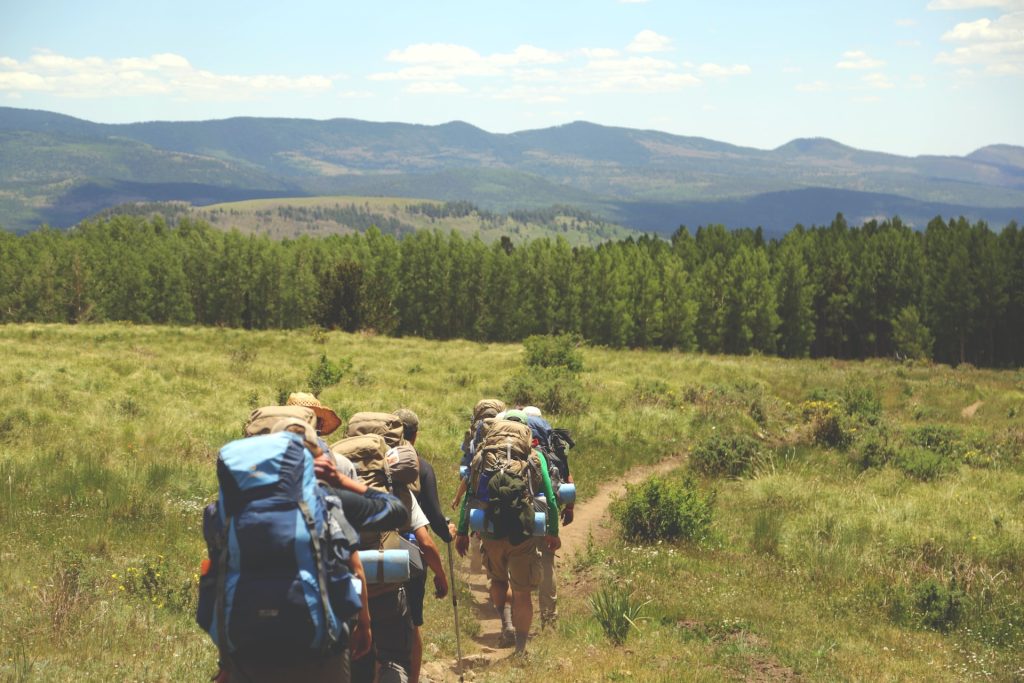Outdoor Adventures
Venturing into the great outdoors is a dance with freedom, a symphony of discovery that beckons the curious, the daring, and the seekers of untamed beauty. Hiking, with its promise of sweeping vistas and hidden trails, has become the canvas upon which we paint our dreams of adventure.
But like any masterpiece, the secret lies in the details, and the details, my fellow adventurers, lie in the gear you choose to embark upon this journey.
Imagine standing at the crossroads of a wilderness, your heart echoing the call of distant peaks, your spirit ready to carve trails into the unknown. Now, picture yourself standing armed with the perfect footwear, clad in layers that mimic the very seasons you traverse, and a backpack that holds not just essentials but stories waiting to be lived.
In this guide, we don’t just unveil the nuts and bolts of essential hiking gear – we unearth the magic that accompanies every step, the sense of liberation with every ascent, and the connection to nature that grows stronger as you venture deeper.
So, whether you’re a seasoned trailblazer or a fledgling wanderer, gear up, for the world of hiking is about to unfold before you, revealing not just a path, but a passage to the extraordinary.
Footwear and Apparel
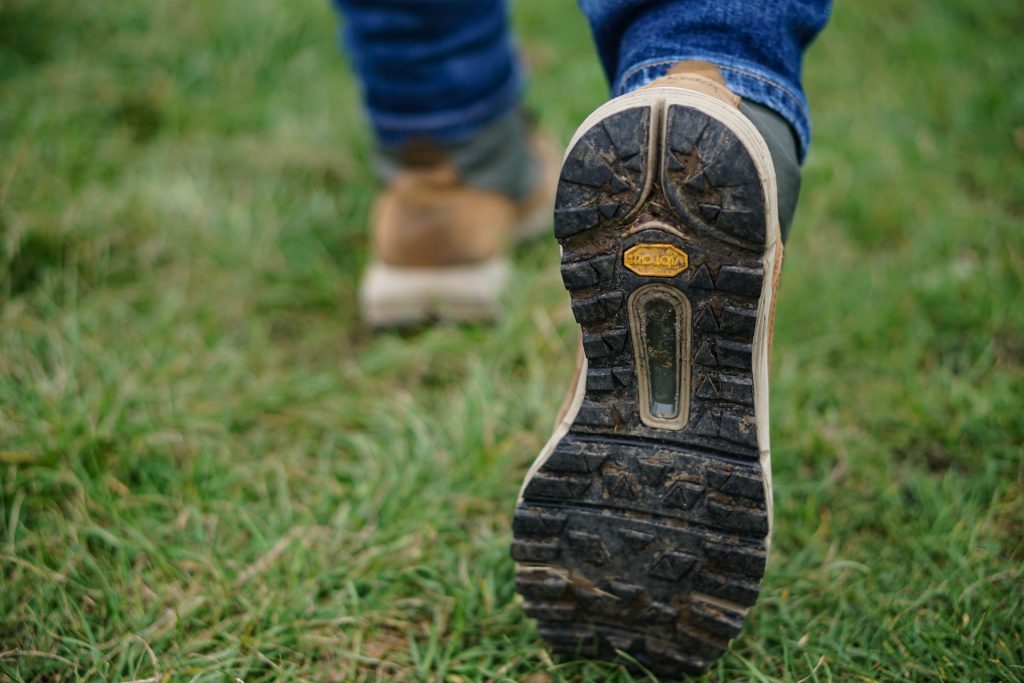
Hiking Boots: Choosing the Right Foundation for Your Hike
Hiking boots are more than just fashion statements; they’re essential for protecting your feet and ensuring comfort and stability on the trail. The terrain you’re tackling significantly impacts the type of hiking boots you should choose. Here are the key considerations to keep in mind:
Ankle Support: Opt for high-cut boots with ample ankle support for rugged, uneven terrain to prevent ankle twisting. On well-maintained trails, low-cut boots provide greater flexibility.
Traction: Superior traction is essential to navigate slippery rocks, muddy trails, and steep inclines. Seek boots with deep, multi-directional lugs on the outsole or Vibram soles known for their durability and grip.
Fit: Prioritize a proper fit to prevent discomfort and blisters. Boots should allow for toe wiggle room without excessive sliding. Try boots on later in the day when feet tend to swell, mimicking long hike conditions.
For your hiking endeavors, consider these top recommendations:
- Salomon Quest 4D 3 GTX: Ideal for challenging terrains and backpacking, known for comfort and support.
- Merrell Moab 2 Mid Waterproof: Versatile for day hikes or shorter backpacking trips, providing comfort and durability.
- La Sportiva TX4: Perfect for hiking and scrambling, offering excellent grip and stability on rocky surfaces.
- Columbia Newton Ridge Plus II: Affordable for beginners, delivering traction and comfort on maintained trails.
- Keen Targhee III Mid WP: Great for hikers with wider feet, known for roomy toe boxes and durability.
Remember, the right hiking boots align with your unique needs, considering terrain, weather, and personal comfort. Your choice can elevate your experience, ensuring you’re ready to conquer every trail that calls your name.
Clothing: Mastering Layering for Optimal Comfort
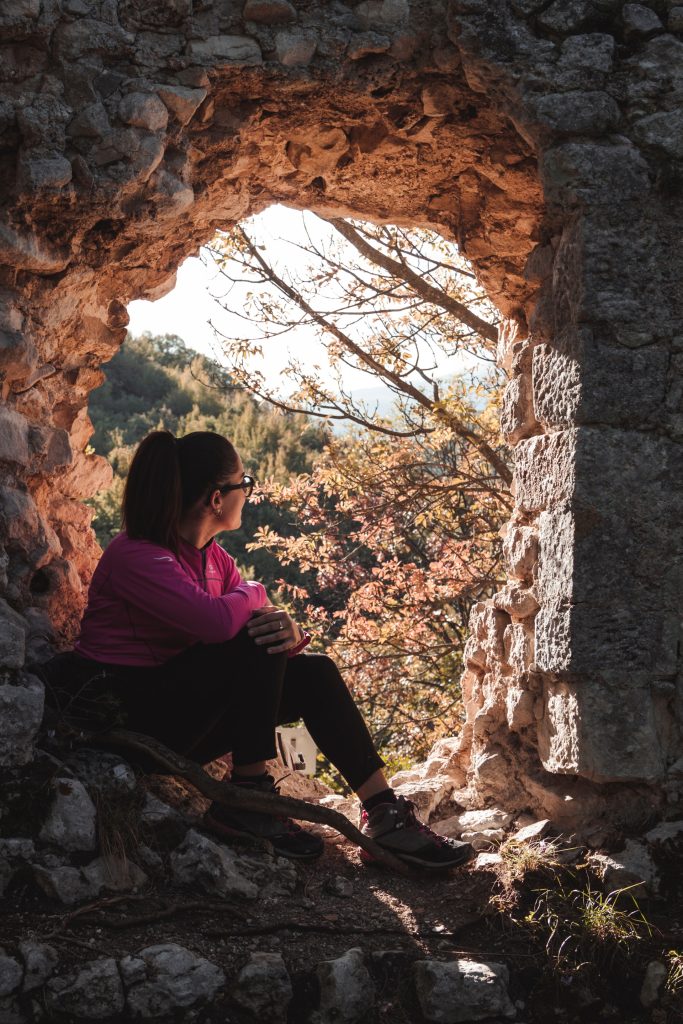
When it comes to conquering the great outdoors, proper clothing isn’t just about style – it’s a strategic choice that directly impacts your comfort and performance. Understanding the art of layering is key to braving changing weather conditions and ensuring you’re prepared for anything Mother Nature throws your way.
Layering Principles:
The layering system is a tried-and-true technique that enables hikers to adapt to fluctuating temperatures and activities. This system consists of three layers:
- Base Layers: These moisture-wicking heroes keep sweat away from your skin, preventing chills. Choose synthetic or merino wool materials for their quick-drying properties.
- Insulating Mid-Layers: These layers trap body heat to keep you warm. Fleece jackets or down vests are excellent options for lightweight insulation.
- Waterproof Outer Layers: Shield yourself from rain and wind with waterproof and breathable jackets. These outer layers provide protection without compromising on comfort.
Factors to Consider When Choosing Clothing:
Weather conditions, hike duration, and personal preferences play significant roles in selecting the right clothing. Check the forecast and choose clothing that allows for flexibility. Lightweight, moisture-wicking options are ideal for warmer weather while insulating layers are crucial for colder conditions. Consider the length of your hike – longer treks might require more versatile clothing.
Top Hiking Clothing Recommendations:
- Columbia Silver Ridge Convertible Pants: Versatile pants that can convert into shorts, offering comfort and protection.
- Patagonia Capilene Base Layers: Renowned for their moisture-wicking properties, perfect for regulating body temperature.
- The North Face Thermoball Jacket: A lightweight and compressible insulating layer that keeps you warm even when wet.
- Arc’teryx Beta AR Jacket: A top-notch waterproof and breathable outer layer for battling the elements.
- Smartwool Merino Wool Socks: Comfortable and odor-resistant socks that keep your feet dry and cozy.
Remember, hiking clothing is a dynamic ensemble that adapts to your needs. Embrace the layering system and consider clothing as an investment in your hiking experience. With the right clothing, you’re equipped to take on any trail, weather condition, and adventure that awaits.
Backpacks and Daypacks
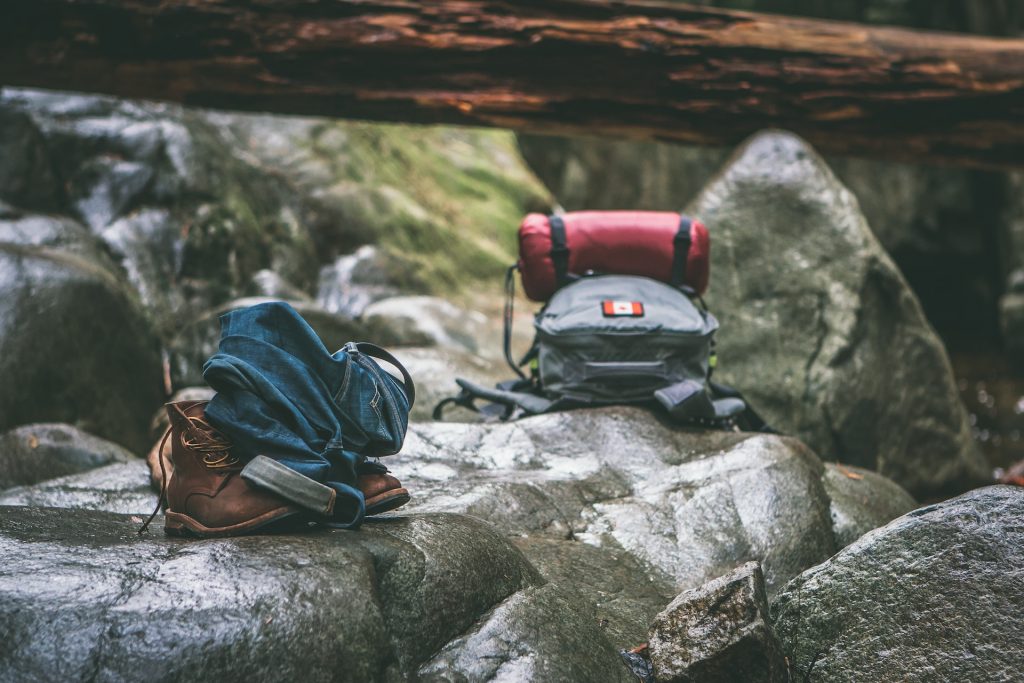
Your journey into the wilderness requires more than enthusiasm – it demands the right vessel to carry your essentials. Enter backpacks and daypacks: the unsung heroes of hiking that ensure you’re organized, comfortable, and ready for anything. Let’s explore how to select the perfect backpack, its essential features, and expert tips for packing and distributing weight effectively.
Selecting the Right Backpack Size: Tailoring to Your Hike’s Length
One size does not fit all when it comes to backpacks. Choosing the appropriate size depends on the length of your hike. For day hikes, a smaller daypack suffices, while multi-day treks demand larger capacities. The right size prevents over-packing and ensures you have everything you need without unnecessary bulk.
Features of a Good Hiking Backpack: Making Your Journey Smooth
A reliable hiking backpack isn’t just a container; it’s a well-engineered companion designed to enhance your journey.
- Adjustable Straps: Customizable straps ensure a snug fit, distributing the backpack’s weight properly and reducing strain on your shoulders and back.
- Ventilation: Proper ventilation in the back panel prevents excessive sweating, keeping you cool and comfortable on the trail.
- Compartments: Multiple compartments keep your gear organized, accessible, and easy to find. External pockets are perfect for quick-grab items like snacks and a water bottle.
- Water Reservoir Compatibility: Many modern backpacks are equipped with sleeves or compartments to accommodate hydration reservoirs, allowing you to stay hydrated on the move.
Tips for Packing Efficiently and Distributing Weight Evenly:
- Heavier Items at the Bottom: Place heavier items like food and cooking gear closer to your back’s center of gravity to maintain balance.
- Even Weight Distribution: Distribute weight evenly between the main compartment and outer pockets to prevent a lopsided load.
- Pack Smart: Roll your clothes to save space and avoid wrinkles. Use stuff sacks to keep smaller items organized.
Top Backpacks and Daypacks for Hiking:
- Osprey Atmos AG 65: Known for its comfortable fit and anti-gravity suspension system, perfect for multi-day hikes.
- Deuter Aircontact Lite 65 + 10: Offers ample storage, adjustable back length, and excellent weight distribution.
- REI Co-op Flash 22 Pack: A versatile daypack with a minimalist design, suitable for short hikes and everyday use.
- The North Face Borealis Backpack: Equipped with a laptop sleeve and organization features, ideal for urban and hiking adventures.
Remember, your backpack is more than a carrier – it’s your hiking partner. Prioritize comfort, organization, and proper weight distribution to ensure a seamless journey through the trails. The right backpack will not only enhance your experience but also keep you prepared for every challenge that comes your way.
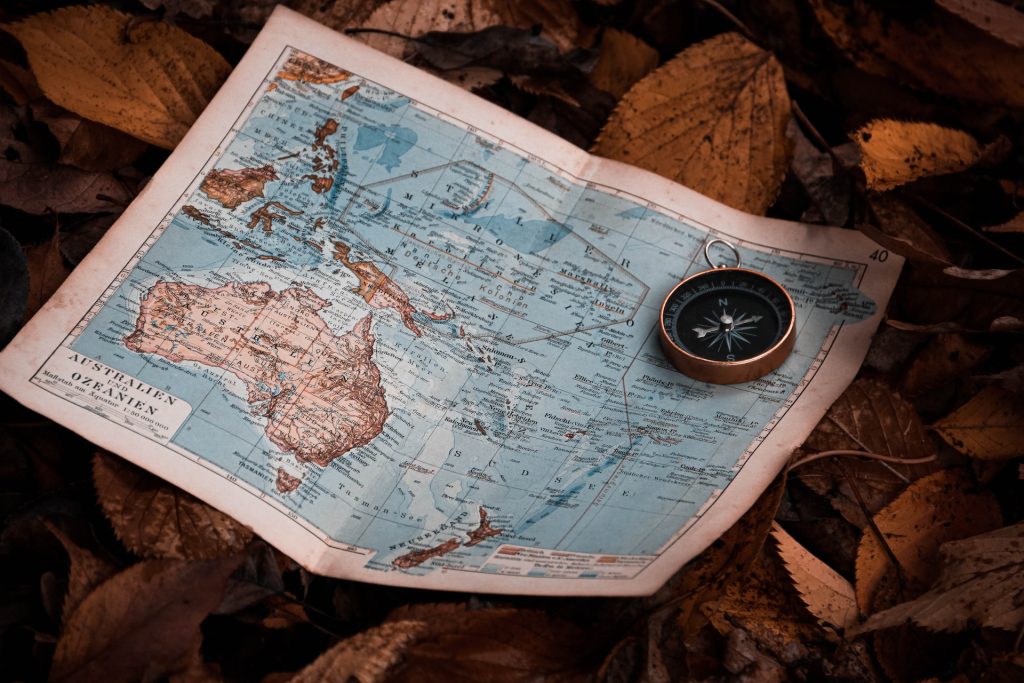
Navigating through the untamed wilderness requires more than just a sense of adventure; it demands reliable navigation tools that ensure you’ll always find your way back home. Whether you’re a seasoned hiker or a novice explorer, understanding the intricacies of navigation tools can mean the difference between an unforgettable journey and a disoriented hike.
In an era dominated by technology, the classic combination of paper maps and a dependable compass still holds its ground as an invaluable means of navigation. These tools go beyond being mere backups; they’re your lifelines when electronic devices fail or signals weaken.
Importance of Paper Maps and a Reliable Compass:
Paper maps provide a tangible connection to your surroundings, offering a bird’s-eye view of your trail and its potential challenges. A reliable compass acts as your true north, guiding you through unmarked territories and ensuring you maintain a sense of direction.
Learning to decipher a topographic map is a skill every hiker should master. Identify landmarks, elevation changes, and potential hazards to plan your route effectively. Complement this with compass navigation: understanding azimuths, declination, and how to follow a bearing.
In the digital age, GPS devices and smartphone apps have revolutionized navigation. These tools offer real-time tracking, accurate positioning, and electronic maps at your fingertips.
GPS Devices and Apps: Guiding You in the Modern World
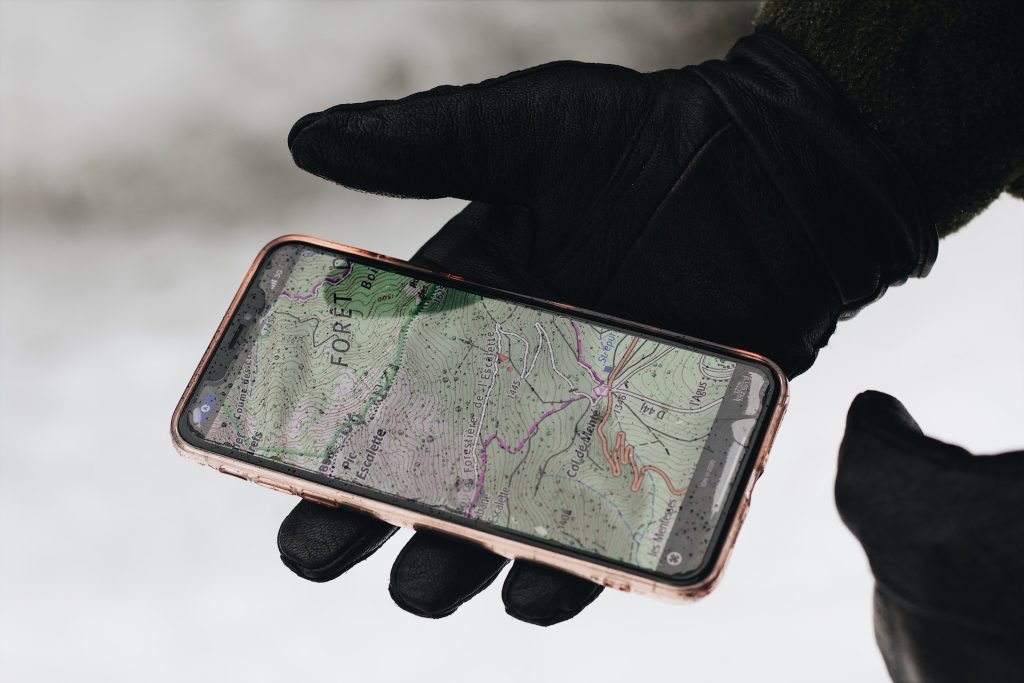
Overview of GPS Devices Designed for Hikers
Dedicated GPS devices designed for hikers come with features tailored to outdoor adventures. Rugged and water-resistant, they provide accurate position data and altitudes. Some devices offer preloaded maps and waypoints for ease of use.
Hiking apps have transformed smartphones into portable navigation devices. These apps use built-in GPS receivers to track your route, provide real-time data, and even suggest trails. Apps like Gaia GPS, AllTrails, and ViewRanger are popular choices.
Digital tools offer convenience, interactive maps, and easy sharing of routes. However, they depend on battery life and signal availability. They’re excellent supplements to traditional navigation tools but shouldn’t replace them entirely.
In the ever-evolving world of navigation, the key is to embrace both tradition and technology. Paper maps and compasses provide a sense of connection with nature, while GPS devices and apps offer accuracy and convenience. Whether you’re a purist or a tech enthusiast, mastering these navigation tools equips you to explore confidently, making each hiking expedition a journey of discovery and empowerment.
Safety Equipment
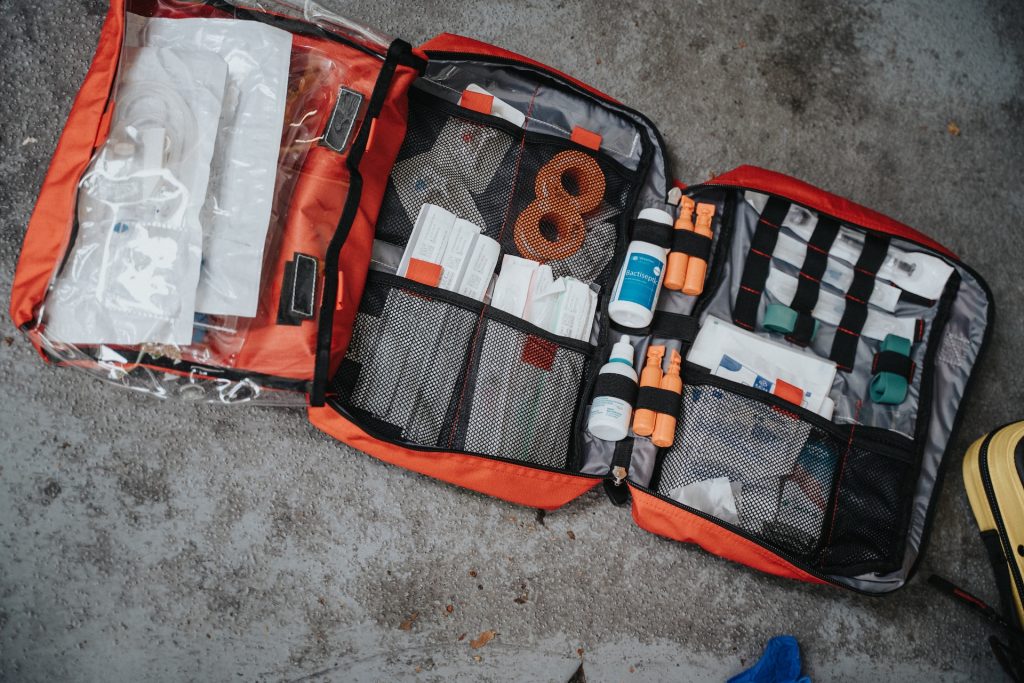
Safety isn’t just a consideration; it’s a priority when you step into the unpredictable realm of hiking. Equipping yourself with the right safety gear isn’t just wise – it’s a responsibility. In this section, we’ll delve into two vital aspects of hiking safety equipment: first aid kits and emergency communication devices.
First Aid Kit: Your Lifesaver in the Wild
A hiking first aid kit isn’t just a luxury; it’s a lifeline that can turn a potential disaster into a manageable situation. Packed with essentials, it ensures you’re ready to address common injuries and discomforts that can arise on the trail.
Essential Items for a Comprehensive Hiking First Aid Kit:
- Adhesive bandages, gauze, and medical tape for wound care.
- Antiseptic wipes and ointments to prevent infections.
- Blister treatment supplies like moleskin and blister cushions.
- Scissors, tweezers, and a pocket knife for various needs.
- Pain relievers, antihistamines, and personal medications.
- Emergency whistle, CPR face shield, and safety pins.
Treating Common Hiking Injuries:
Knowing how to address blisters, cuts, and sprains can make a significant difference. Apply moleskin to hotspots, disinfect and cover cuts to prevent infection, and use bandages and compression wraps for sprains.
Importance of Knowing Basic First Aid Procedures:
Your first aid kit is only as useful as your knowledge of how to use its contents. Familiarize yourself with basic first aid procedures – from cleaning wounds to creating splints – to effectively handle emergencies.
Best First Aid Kit for Hiking:
- First Aid Only All-Purpose First Aid Kit: Versatile and suitable for both short hikes and longer treks.
Emergency Communication: Staying Connected in Critical Times

Personal Locator Beacons (PLBs) and Satellite Messengers
When you’re in a remote area without cell reception, PLBs, and satellite messengers become your lifelines. These devices send distress signals to rescue services, ensuring swift assistance in emergencies.
How to Use Emergency Communication Devices
Activate your PLB or satellite messenger, and it will transmit a signal with your location coordinates to rescue services. Stay in your position and await help, as moving around may affect the accuracy of your signal.
Importance of Informing Someone About Your Hiking Plans:
Before setting off, share your hiking itinerary with a trusted friend or family member. Include details about your route, expected return time, and emergency contact information. This step ensures that someone knows when to raise the alarm if you don’t return as planned.
Best Communication Device to Have When Hiking
- Garmin inReach Mini: A compact and reliable satellite communicator that offers two-way messaging and interactive SOS.
Safety on the trail is non-negotiable. By carrying a well-stocked first aid kit and a reliable communication device, you’re equipping yourself to handle the unexpected with confidence. Remember, these tools not only empower you but also contribute to a responsible and secure hiking experience.
Hydration and Nutrition

Embarking on a hiking adventure demands more than a spirit of adventure – it requires sustenance to keep your body energized and hydrated through the challenges of the trail. In this section, we’ll delve into the essentials of hydration and nutrition, ensuring you’re equipped to conquer the miles with vitality and vigor.
Selecting a Hydration System: Staying Quenched on the Move
Proper hydration is a non-negotiable aspect of any hike. The question arises: water bottles, hydration packs, or both?
- Water Bottles: Classic and straightforward, water bottles are easy to refill and provide a clear visual cue of your hydration levels. Opt for lightweight, durable bottles that fit comfortably in your backpack’s side pockets.
- Hydration Packs: These reservoir-based systems offer hands-free sipping via a tube, allowing you to hydrate without breaking your stride. They’re particularly useful on strenuous hikes where consistent water intake is essential.
Energy-Rich Snacks and Trail Food: Powering Your Journey
Hiking burns calories, and the right trail food can make all the difference in maintaining your energy levels. Energy-rich snacks like nuts, trail mix, energy bars, and dried fruits offer quick, easily digestible fuel to keep you going.
Importance of Staying Hydrated and Fueled:
Dehydration and low energy levels can turn a rewarding hike into an arduous endeavor. Staying hydrated prevents fatigue, heat-related illnesses, and muscle cramps. Proper nutrition ensures a steady supply of energy, helping you tackle steep inclines and challenging terrain with confidence.
Best Brands for Water Bottles and Hydration Packs for Hiking:
- Hydration Packs:
- Osprey Hydraulics Reservoir: Known for its durable design and easy-to-clean features.
- CamelBak Crux Reservoir: Offers a high flow rate and leak-proof construction.
- Water Bottles:
- Nalgene Wide Mouth Water Bottle: Durable and easy to clean, available in various sizes.
- Hydro Flask Standard Mouth Bottle: Insulated to keep liquids cold or hot, ideal for longer hikes.
By selecting an effective hydration system, packing energy-rich snacks, and prioritizing proper hydration and nutrition, you’re ensuring that your body has the fuel it needs to conquer every hill and navigate every challenge. Remember, a well-fed and well-hydrated hiker is a happy and resilient hiker, poised to relish every step of the trail.
Shelter and Weather Protection
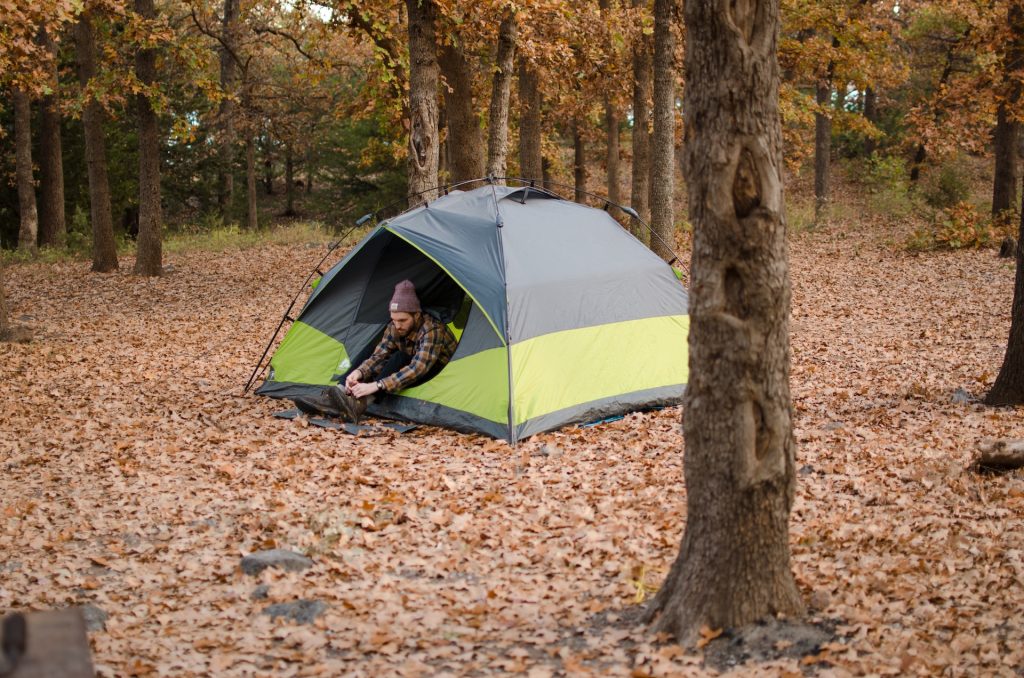
Nature is a magnificent and unpredictable force, capable of turning a serene hike into a challenging adventure. In this section, we’ll explore the essentials of shelter and weather protection, ensuring you’re equipped to face the elements head-on and find respite when needed.
Emergency Shelter Options: Preparing for the Unexpected
When the unexpected strikes – whether it’s a sudden downpour, an unforeseen delay, or an unplanned night out – having emergency shelter options can be a game-changer.
- Lightweight Tents: These compact shelters offer refuge against rain and wind. Opt for lightweight, single-person tents or ultralight models that fit seamlessly into your backpack.
- Bivvy Sacks: Ideal for emergency situations, bivvy sacks are lightweight, compact, and offer a protective barrier against the elements. They can provide warmth and protection in unforeseen circumstances.
- Emergency Blankets: Also known as space blankets, these reflective sheets are incredibly lightweight and compact. They’re designed to retain body heat, making them valuable additions to your emergency kit.
Importance of Carrying Weather-Appropriate Gear:
Unpredictable weather can shift from sunny skies to thunderstorms within hours. Carrying weather-appropriate gear is essential for staying comfortable and safe.
- Rain Gear: A waterproof jacket and pants are your first line of defense against unexpected rain showers, keeping you dry and comfortable.
- Sun Protection: Shield yourself from harmful UV rays with sunglasses, sunscreen, and protective clothing. A wide-brimmed hat provides essential shade and prevents sunburn.
- Headwear: A versatile hat can shield you from the sun, rain, and even insects. Opt for lightweight, breathable materials.
Best Emergency Shelter and Weather Protection for Hiking:
- Emergency Shelter:
- SOL Escape Bivvy: A lightweight, breathable bivvy sack that offers protection against wind, rain, and cold.
- Weather Protection:
- Arc’teryx Beta AR Jacket: A versatile, high-quality waterproof jacket for robust weather protection.
- Outdoor Research Helium Jacket: Lightweight, packable rain protection perfect for unexpected showers.
Being prepared for shifting weather and unexpected situations is the hallmark of a responsible hiker. Carrying emergency shelter options and weather-appropriate gear not only ensures your safety but also enhances your overall hiking experience. Remember, the right gear can make the difference between weathering the storm with confidence and facing challenges unprepared.
Hiking Poles
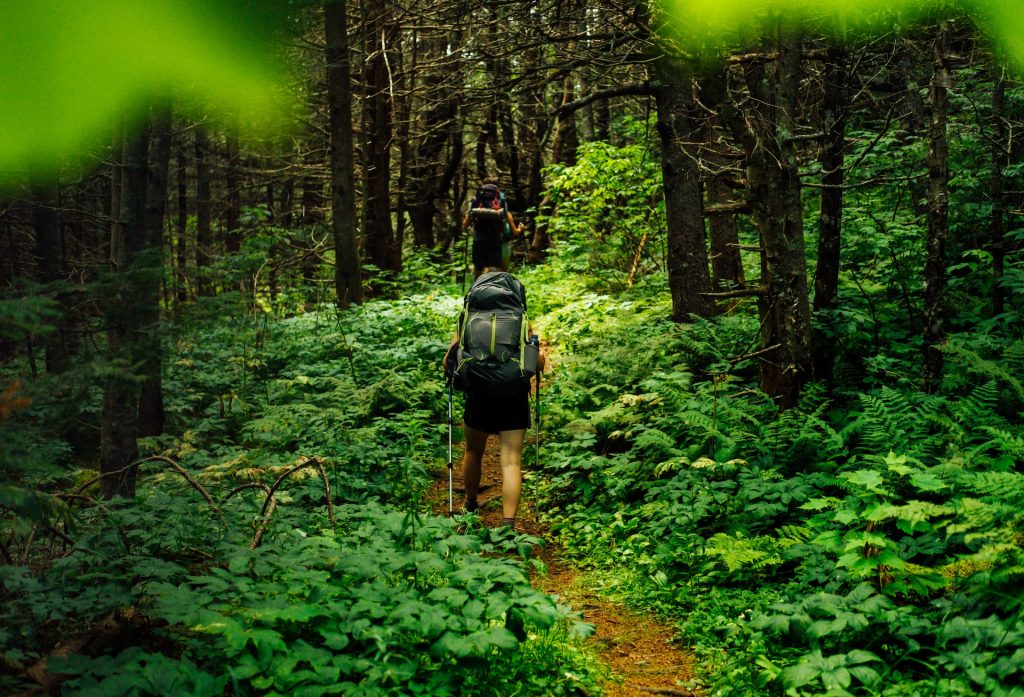
Hiking poles aren’t just accessories; they’re extensions of your body that can significantly enhance your hiking experience. In this section, we’ll delve into the advantages of using hiking poles, the considerations when choosing between adjustable and fixed-length poles, and techniques to maximize their benefits.
Benefits of Using Hiking Poles
Hiking poles aren’t reserved for mountaineers; they offer valuable benefits to hikers of all levels. Here’s why they’re worth considering:
- Stability: Hiking poles provide an extra point of contact with the ground, significantly enhancing your stability on uneven terrain, river crossings, and slippery surfaces.
- Reduced Joint Impact: With each step, hiking poles absorb some of the impact, reducing strain on your knees, ankles, and hips. This is particularly beneficial on downhill sections.
Adjustable vs. Fixed-Length Poles: Choosing What’s Right for You
When selecting hiking poles, you’ll encounter both adjustable and fixed-length options. Here’s how to make the right choice:
- Adjustable Poles: These allow you to tweak the length to suit different terrains and slopes. They’re versatile and can be shared among hikers of varying heights.
- Fixed-Length Poles: Known for their simplicity and lighter weight, fixed-length poles are ideal for those who prefer a set length and don’t need adjustments.
Considerations for Choosing the Right Poles:
- Terrain: If you encounter varied terrain, adjustable poles offer flexibility. For consistent terrain, fixed-length poles may suffice.
- Packability: Collapsible poles are more compact for storage and transportation, making them suitable for backpacking.
Techniques for Using Hiking Poles Effectively:
Maximize the benefits of your hiking poles by mastering these techniques:
- Uphill: Plant the poles slightly ahead and push down to help propel yourself uphill.
- Downhill: Place the poles ahead to provide stability and absorb impact, reducing strain on your joints.
- Flat Terrain: Use the poles rhythmically to maintain a steady pace, engaging your upper body.
Best Hiking Poles Recommendations:
- Black Diamond Alpine Carbon Cork Trekking Poles: Offering adjustable length and ergonomic grips for comfort.
- LEKI Makalu FX Carbon AS: Foldable, lightweight poles with sturdy construction.
- Foxelli Carbon Fiber Trekking Poles: Collapsible and lightweight, ideal for backpackers.
Whether you’re navigating challenging terrain or simply seeking extra stability, hiking poles are versatile tools that can revolutionize your hiking adventures. Their impact on joint comfort and stability can make the difference between an enjoyable hike and a struggle. Remember, the right poles can elevate your performance, allowing you to tackle any trail with confidence and grace.
Personal Items and Accessories

While the grandeur of the wilderness takes center stage, it’s often the small essentials and accessories that can make or break your hiking experience. In this section, we’ll explore the significance of personal items and accessories that may seem minor but have a major impact on your safety, comfort, and overall enjoyment.
Essentials: A Glimpse into the Small but Vital Gear:
- Sunscreen: Guard your skin against the sun’s UV rays, preventing painful burns and long-term damage.
- Insect Repellent: Ward off pesky insects that can turn a serene hike into an uncomfortable ordeal.
- Multi-Tool: This versatile gadget can serve as a mini toolbox, equipped with a knife, scissors, and various tools for emergency situations.
Importance of Carrying Identification and Emergency Contact Information:
In the wild, even well-planned hikes can take unexpected turns. Carrying identification and emergency contact information ensures that if you find yourself in a situation where help is needed, rescuers can quickly identify you and contact your loved ones.
Compact and Versatile Gear: Multi-Tool and Duct Tape:
- Multi-Tool: A compact multi-tool isn’t just for gadget enthusiasts; it’s a practical piece of equipment that can assist in tasks ranging from cutting paracord to repairing gear.
- Duct Tape: This mighty adhesive has a multitude of uses – from mending torn equipment to providing a quick fix for blister-prone spots on your feet.
These seemingly minor personal items and accessories contribute to a seamless and enjoyable hiking experience. While they might not be the first things that come to mind, they’re the unsung heroes that enhance your comfort and safety on the trail. Never underestimate the impact of sunglasses that shield your eyes, sunscreen that guards your skin, or a multi-tool that’s ready to lend a hand. In the wild, it’s often the little things that make the biggest difference.
Responsible Hiking Practices
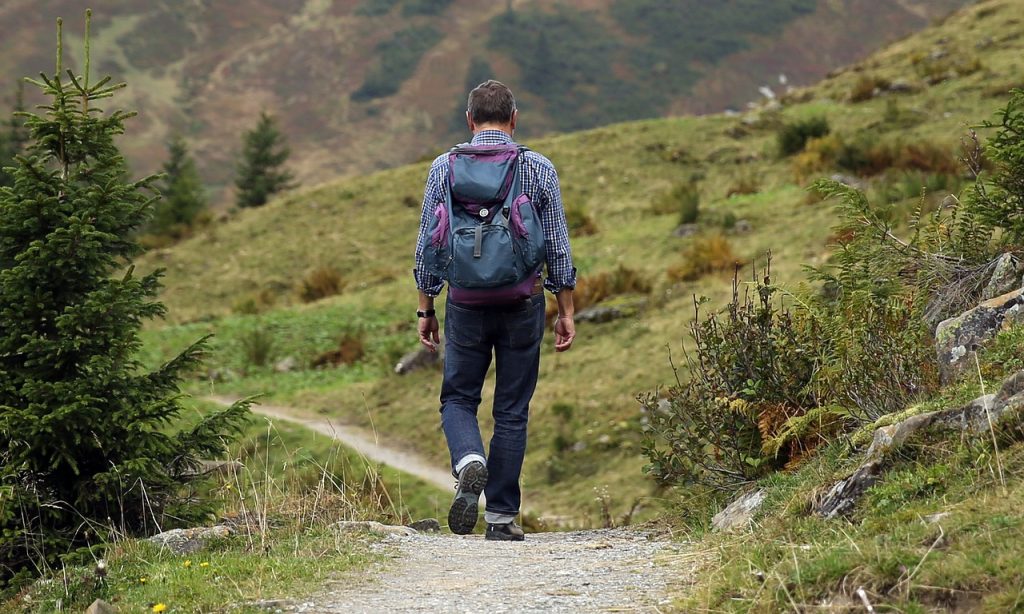
A true hiker knows that the trail isn’t just a path; it’s a sacred passage through nature’s wonders. As you embark on your journey, embracing responsible hiking practices is essential to preserve the beauty and integrity of the wilderness for generations to come. In this section, we’ll delve into the Leave No Trace principles, ethical considerations, and the power of fostering a culture of responsibility among fellow hikers.
Leave No Trace Principles: Minimizing Environmental Impact
The wilderness isn’t just a backdrop; it’s a delicate ecosystem that demands respect. Embrace the Leave No Trace principles to ensure you leave minimal impact:
- Plan Ahead and Prepare: Research your route, pack essentials, and understand regulations to minimize unexpected incidents.
- Travel and Camp on Durable Surfaces: Stick to established trails and campsites to prevent damage to fragile habitats.
- Dispose of Waste Properly: Pack out everything you bring, including trash and biodegradable items. Dig a cat hole for human waste.
- Leave What You Find: Avoid picking plants, disturbing wildlife, or leaving behind markings.
- Minimize Campfire Impact: Use a camp stove for cooking to prevent starting fires that can scar the landscape.
- Respect Wildlife: Observe animals from a distance, never feed them, and avoid behaviors that stress or alter their behavior.
- Be Considerate of Other Visitors: Yield the trail to others, keep noise levels down, and allow everyone to enjoy the serenity of the wilderness.
Ethical Considerations: The Path Less Traveled and Wildlife Etiquette
Staying on marked trails isn’t just about following rules; it’s about preserving the fragile ecosystems that thrive within these paths. Venturing off trails can damage vegetation and contribute to soil erosion. Additionally, respecting wildlife from a distance prevents disruption to their natural behaviors and habitats.
Fostering a Culture of Responsible Hikers: Leading by Example
As a hiker, you hold the power to inspire and educate fellow enthusiasts. Encourage responsible practices by demonstrating them. Share your knowledge with beginners and emphasize that responsible hiking enhances the natural beauty you all cherish.
Conclusion
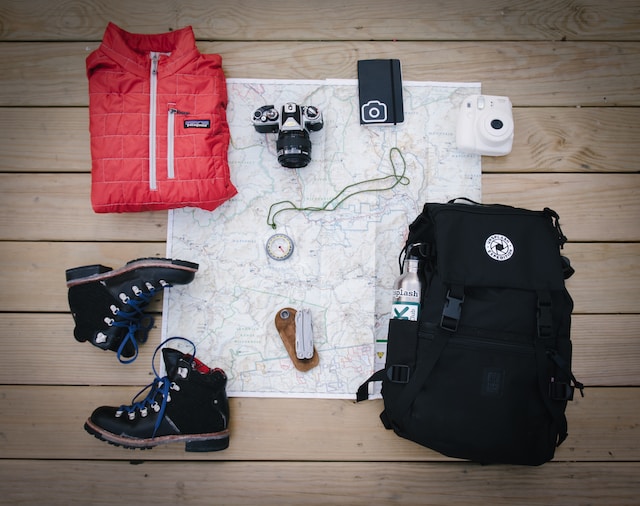
As we conclude this comprehensive exploration of essential hiking gear, remember that the right equipment doesn’t just elevate your hike; it deepens your connection with nature. From sturdy boots that bridge the gap between you and the earth to backpacks that carry your essentials like a faithful companion, each piece of gear plays a role in your hiking journey.
Equip yourself with quality gear that aligns with your unique needs and preferences. Whether you’re a minimalist who prefers the simplicity of fixed-length poles or a tech-savvy adventurer armed with a GPS device, there’s gear that resonates with you. By investing in gear that suits your style, you’re not just enhancing your comfort and safety; you’re investing in your relationship with the great outdoors.
As you venture forth into the untamed wilderness, remember that responsible hiking is more than a practice – it’s a legacy. Your actions today ripple through time, shaping the trails for future generations. By adopting the principles of Leave No Trace, staying on marked paths, and respecting the delicate balance of nature, you’re contributing to the preservation of the very landscapes that inspire and rejuvenate us all. Happy hiking!
Frequently Asked Questions
Q1: What is this blog about?
A1: This blog is a comprehensive guide to essential gear for hiking and outdoor adventures. It covers everything from footwear and clothing to navigation tools, shelter, and responsible hiking practices.
Q2: Why is proper hiking gear important?
A2: Proper gear enhances your comfort, safety, and overall experience during hikes. It helps you navigate diverse terrain, stay protected from weather, and be prepared for unexpected situations.
Q3: What types of gear are covered in this guide?
A3: This guide covers a wide range of gear, including footwear, clothing, navigation tools, safety equipment, hydration and nutrition essentials, personal items, and responsible hiking practices.
Q4: Who is this guide intended for?
A4: This guide is for hikers of all experience levels – from beginners seeking advice on what to pack to seasoned adventurers looking for gear recommendations and tips on responsible hiking practices.
Q5: Can I find information on specific brands and models of hiking gear?
A5: Yes, the guide includes recommendations for top brands and models for each category of gear discussed. This helps you make informed choices based on quality and suitability for your needs.
Q6: Are there tips for packing efficiently for hiking?
A6: Absolutely. The guide offers tips for effective packing, distributing weight evenly, and maximizing the use of your backpack’s space.
Q7: Is there information on emergency and safety gear?
A7: Yes, the guide provides insights into first aid kits, emergency communication devices, and more to help you stay safe on the trail.
Q8: What are Leave No Trace principles?
A8: Leave No Trace principles are guidelines that promote responsible outdoor behavior to minimize environmental impact. The guide explains these principles and their importance.
Q9: Are there suggestions for fostering a culture of responsible hiking practices?
A9: Yes, the guide includes tips on how to encourage responsible hiking practices among fellow hikers, creating a positive impact on the environment and the hiking community.
Q10: Can I use this guide as a reference for planning hikes?
A10: Absolutely. This guide serves as a comprehensive reference for planning hikes and ensuring you have the right gear for a successful and enjoyable outdoor adventure
Note: This article contains affiliate links. If you make a purchase through these links, we may earn a small commission at no extra cost to you, supporting our content creation.

